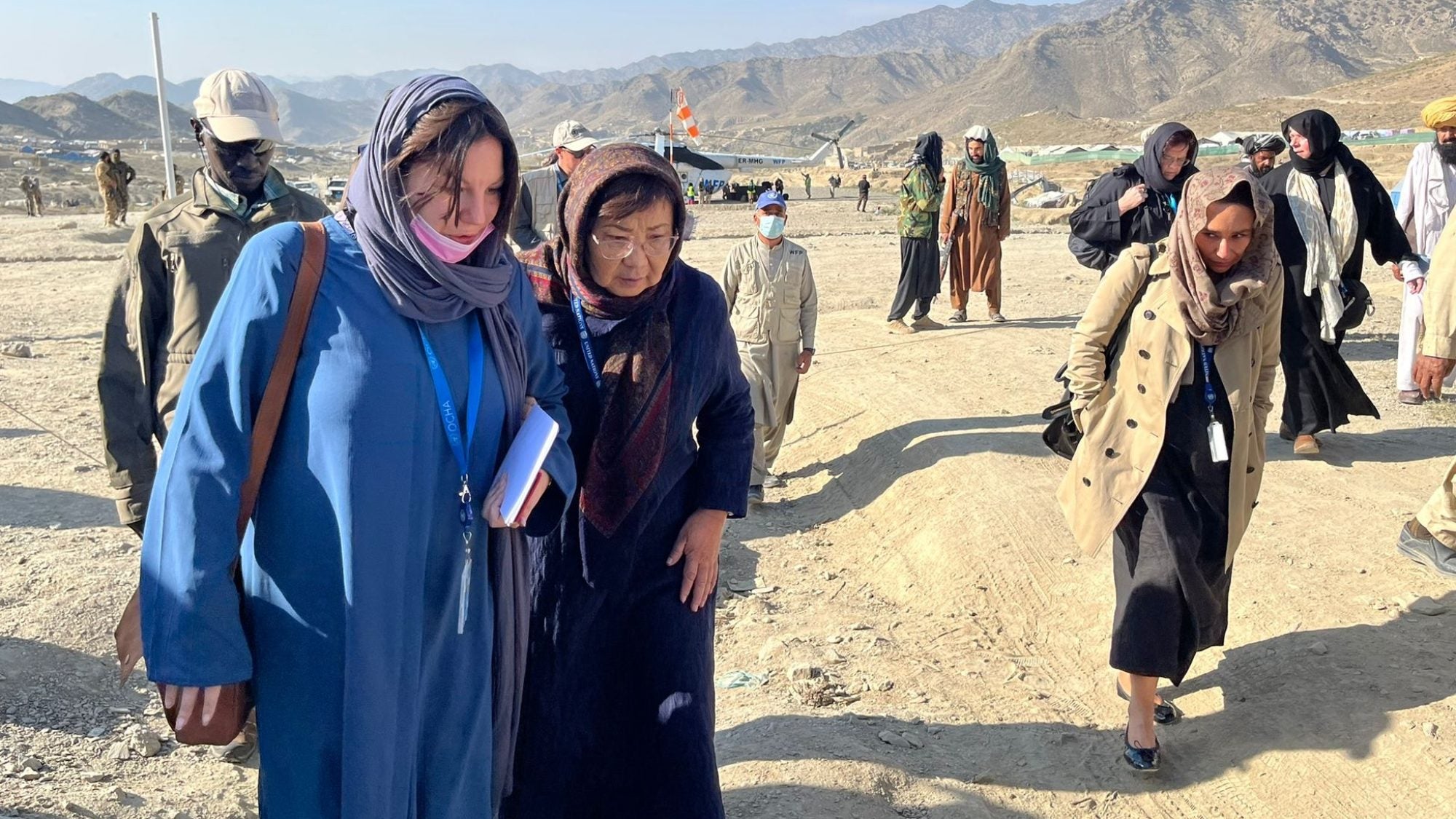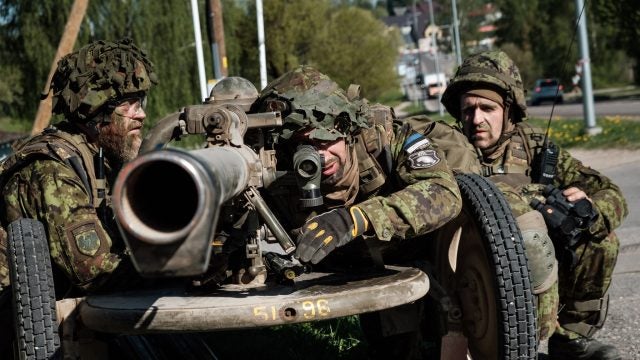
Title: Afghanistan’s Truncated Capacity to Respond to Natural Disasters: Isn’t it Time for the International Community to Step In?
Following the capture of power by the Taliban in August 2021, Afghans have been facing a stark humanitarian and economic crisis, which has only been compounded and worsened by recurrent natural disasters. The Taliban regime’s incapacity to respond to these disasters and the diminishing international aid and attention have intensified the economic hardship leading to emigration flows and a rise in violent extremism. In response, the international community must refocus its attention on Afghanistan and work towards evolving a strategy for the long-term stabilization of the country.
The Disaster-Stricken Country
A series of earthquakes in October 2023 in the Zinda Jan and Ghorian districts of Afghanistan’s western Herat province—with one reaching 6.3 on the Richter Scale—killed approximately 2,400 people and affected 43,395 more. More than 3,330 homes (mostly mud buildings) were destroyed, another 2,137 homes were severely damaged, and 1,697 more were moderately damaged. The earthquake added to the helplessness of a people whose suffering has worsened with each passing day since the Taliban’s takeover of power in August 2021. More importantly, the Taliban regime’s response to the disaster has exposed its absolute lack of preparedness to deal with such exigencies in a country prone to calamity.
The Response Paradox
The primary humanitarian response to the earthquake was the UN- and NGO-led Herat Earthquake Response Plan, which supplied emergency shelter materials, food, health, and hygiene support. However, such support was provided only to the most affected areas and communities due to shrinking resources and the difficulties of working in Taliban-controlled Afghanistan. For instance, the Taliban have limited the reach and capabilities of the NGOs by barring them from employing female workers and trying to coerce them into routing their resources through the Taliban. A vast number of those affected by the earthquakes, therefore, have likely remained without assistance.
The Taliban, also short in resources and competencies, had mixed messaging surrounding the disaster. Taliban spokesperson Zabiullah Mujahid underlined the limited capacity of the Taliban regime to deal with the crisis by saying “Afghanistan is a poor country and cannot handle disasters on its own; therefore, we need the help and support of other countries.” However, at the same time, press releases by the Foreign and Defense Ministries spoke of the success their medical, logistical, and engineering teams had in reaching the affected areas within an hour, a claim disputed by the locals and volunteers. In one such instance, Deputy Prime Minister for Economic Affairs Mullah Abdul Gani Baradar visited Herat Hospital to attend to the injured and the earth-quake ravaged areas to take stock of the aid and assistance delivery.
Relatedly, Acting Army Chief Qari Fasihuddin also visited the Zinda Jan district with other high-ranking official military members and attended the funeral of those killed. Terming the disaster a “divine calamity,” Fasihuddin promised to share the sorrow of the affected and assist them with shelter as soon as possible. In a rare gesture, the Taliban even temporarily waved off its diktak banning women from long-distance travel without male companions so that they could aid other women and girls, who were the majority of the victims. In general, the Foreign and Defense Ministries attempted to stress a fair and equal distribution of relief materials and money. Yet, these initiatives merely sought to regulate—and, in turn, take credit for—what was essentially grassroots as well as NGO efforts and did not contribute to the disaster relief process in real terms.
Afghanistan’s Climate Vulnerability
Months after the disaster, life in Zinda Jan and Ghorian remains at a standstill. Children still do not have access to a madrassa or school, livestock disappeared, and farming has stopped. A few dome-like structures to house families have been built in Zinda Jan using money from donations, but Taliban projects to build permanent houses are mostly incomplete. Many of the civilians affected by the earthquake are still living in tents donated by aid agencies and enduring an intense winter. Their survival depends on the paltry donations that trickle in from local sources, including small amounts from Afghan expats and people from other provinces, as well as NGOs, who themselves have struggled to deal with the affected population’s range of needs.
These consequences are the results of a broader trend. Afghanistan is one of the most vulnerable countries to different forms of natural disasters, including floods, earthquakes, and drought. Prior to the October 2023 earthquake, nine provinces had experienced severe flooding. Flash floods in eleven provinces killed at least 47 people and injured 57 others in July, and the Jurm district of Badakhshan province was hit by an earthquake of 6.5 magnitude in March. Many of these natural disasters are rooted in climate change, which is set to worsen the suffering of common Afghans in the coming years. Although tradition obligates Afghans to come to each other’s rescue in times of crisis, rampant poverty, hunger, and unemployment have put this age-old practice under stress.
A Systemic Collapse
The worsening state of affairs in the Zinda Jan and Ghorian districts is a testament to a combination of a weak Taliban response and an apathetic international community. Afghanistan’s incapacity for disaster response under the Taliban must be viewed in the context of a complete collapse of governance structures since August 2021. In the days following the Taliban’s capture of power, many critical and longstanding functionaries of Afghanistan’s civilian government fled the country due to fear of persecution, leading to a brain drain and flight of capacity. Those who could not escape went into hiding, waiting to assess the new regime’s approach towards the “agents of the previous administration” and contemplating methods of leaving the country. Many of them were personnel and officials belonging to the Afghanistan National Disaster Management Authority (ANDMA).
Set up in 1973, the ANDMA has nearly five decades of experience dealing with natural disasters in the country. However, in the past two decades, it has been reliant on international aid to significantly augment its capabilities. For example, the United Nations Assistance Mission in Afghanistan (UNAMA) and the Asia Development Bank collaborated with the Government of Afghanistan and other partners to develop a National Plan for Disaster Management and a Strategy for Institutional Strengthening in Risk Management in 2005. Both these plans detailed a roadmap for strengthening Afghanistan’s disaster response capacity and identified areas for international assistance. In 2017, the World Bank, with financial support from the Government of Japan and the Global Facility for Disaster Risk Reduction, produced a comprehensive multi-hazard risk assessment at the national level. Throughout my interactions and associations with ANDMA, the incremental capacity of ANDMA was evident in its ability to respond to disasters. However, the Taliban’s capture of power in 2021 led to a flight of capacity as ANDMA personnel fled the country.
Moreover, the lack of financial resources at the Taliban’s disposal has only further compromised their rudimentary efforts to come to the aid of the Afghans. International assistance has dried up post-August 2021, affecting multiple agencies’ ongoing projects. This outcome is due to a combination of punitive measures to compel the Taliban to mend its regressive policies and a strategic detachment from Afghanistan to other conflict theaters like Ukraine and the Indo-Pacific. In response, the Taliban have sought to fill the government’s coffers by expanding their tax regime and attracting foreign investment, especially in the mining sector.
Incidentally, a month after the earthquake, the Taliban unveiled the exploration process of a major iron mine in the Ghorian district. Such moves have indeed increased the revenue at the disposal of the Taliban-led government. However, the security sector was allocated 50 percent of the 2023-24 budget, indicating that the Taliban prioritizes enhancing military capacities over governance and humanitarian efforts. For the Taliban, dealing with the threats posed by the terrorist group Islamic State’s Khorasan Province (ISKP) and other resistance groups trying to topple the regime appear to be of primary importance.
The international community has also missed opportunities for engagement, namely by excluding the Taliban from global conversations on climate change. According to the 2019 Global Climate Risk Index (the last year the index has data for), Afghanistan was ranked sixth among countries most affected by climate impacts such as rising temperatures, drought, flash floods, and receding water tables. Nevertheless, since 2021, Afghanistan has been excluded from the annual UN climate change conferences due to the lack of diplomatic recognition for the Taliban regime and rampant violations of women’s rights in the country. This policy that seeks to isolate the Taliban has failed to distinguish between the regime and its victims and resulted in the rise of climate refugees and climate-induced displacement.
Way Ahead
It is almost a given that the Taliban’s future responses to natural disasters will continue to be marked by tokenism and incompetence. Common Afghans will likely be left to fend for themselves, with barely sufficient assistance from international and local NGOs. Such conditions can change only if the international community’s attention, which has shifted attention away from Afghanistan to Ukraine and now Palestine, refocuses on the plight of the Afghans. The international community needs to realize that frequent natural disasters, coupled with the prolonged economic crisis, could act as push factors for migration and even a rise in violent extremism, with the unemployed and displaced youth compelled to join militant groups like al-Qaeda and ISKP due to the lack of economic opportunities. Countries in the region and that afar would be equally affected by such a phenomenon as radicalization spreads beyond Afghanistan.
Thus, it is time to unveil a policy that engages the Taliban on crucial humanitarian and economic issues. Such a policy should potentially translate to strengthening assistance and institution building, increasing interaction with the Taliban on climate stress and disaster management, and building platforms of cooperation to include Afghans in global climate conversations and disaster relief. The international community and the INGOs can also help develop programs for training the ANDMA personnel and provide them with modern equipment.
In addition to providing immediate humanitarian assistance for immediate relief, there is a need to build climate resilience strategies and implement sustainable water management practices, such as rainwater harvesting and efficient irrigation systems which can help mitigate the impact of droughts. For this purpose, local self-help groups need to be roped in. In particular, women’s groups that provide aid to female victims of disasters need assistance and resources to help those grappling with poverty and hunger due to climate-induced shocks. Afghan NGOs and local grassroots representatives need to be included in global conferences on climate and disaster management to help build networks of collaboration. Inviting Afghanistan to participate in the upcoming COP29 summit, to be held in Azerbaijan in November 2024, would be one such opportunity for engagement.
Overall, the international community needs to adopt a holistic approach that combines immediate humanitarian assistance with long-term climate resilience strategies. Such strategies will augment the local institutional disaster response and recovery capacities necessary to prevent Afghanistan from sliding further into a humanitarian, economic, and security black hole.
. . .
Dr. Shanthie Mariet D’Souza is a Fulbright-Nehru Visiting Chair at the School of Public Policy, University of Massachusetts, Amherst, USA; Founder of Mantraya, Visiting faculty at the Naval War College, Goa, India, and a Non-Resident scholar at the Middle East Institute, Washington DC. She has worked in governmental and non-governmental sectors and conducted field research in various provinces of Afghanistan for more than a decade. Email: smdsouza@umass.edu Tweets @shanmariet
Image Credit: (UN Photo/Silke von Brockhausen) via Flickr Commons.
Recommended Articles

On May 20, 2025, the World Health Assembly unanimously adopted the World Health Organization (WHO) Pandemic Agreement, an international treaty designed to strengthen pandemic prevention, preparedness, and…

As the Trump administration proposes a sweeping overhaul of the US foreign assistance architecture by dismantling USAID, the Millennium Challenge Corporation (MCC), and restructuring the State Department, there is an…

The Trump administration’s abandonment of allies and embrace of Putin’s Russia has raised pressing questions about whether Estonia, Latvia, and Lithuania can continue to rely on NATO for…